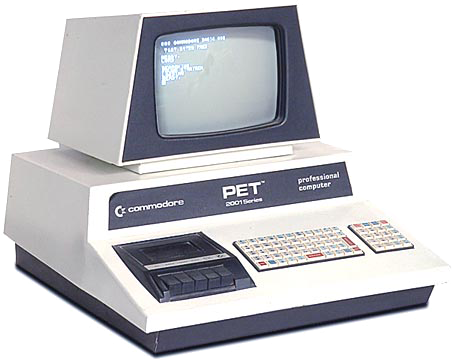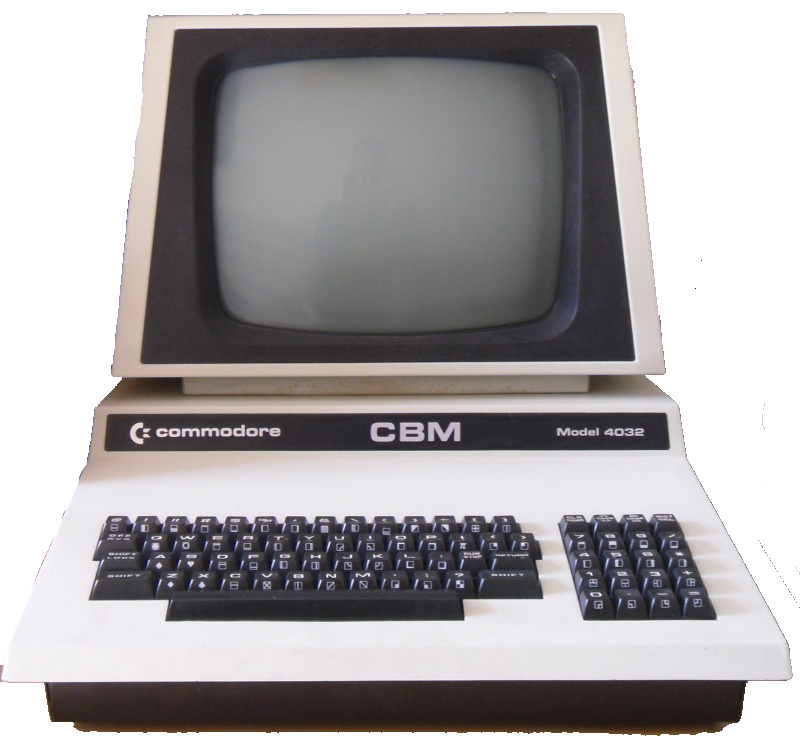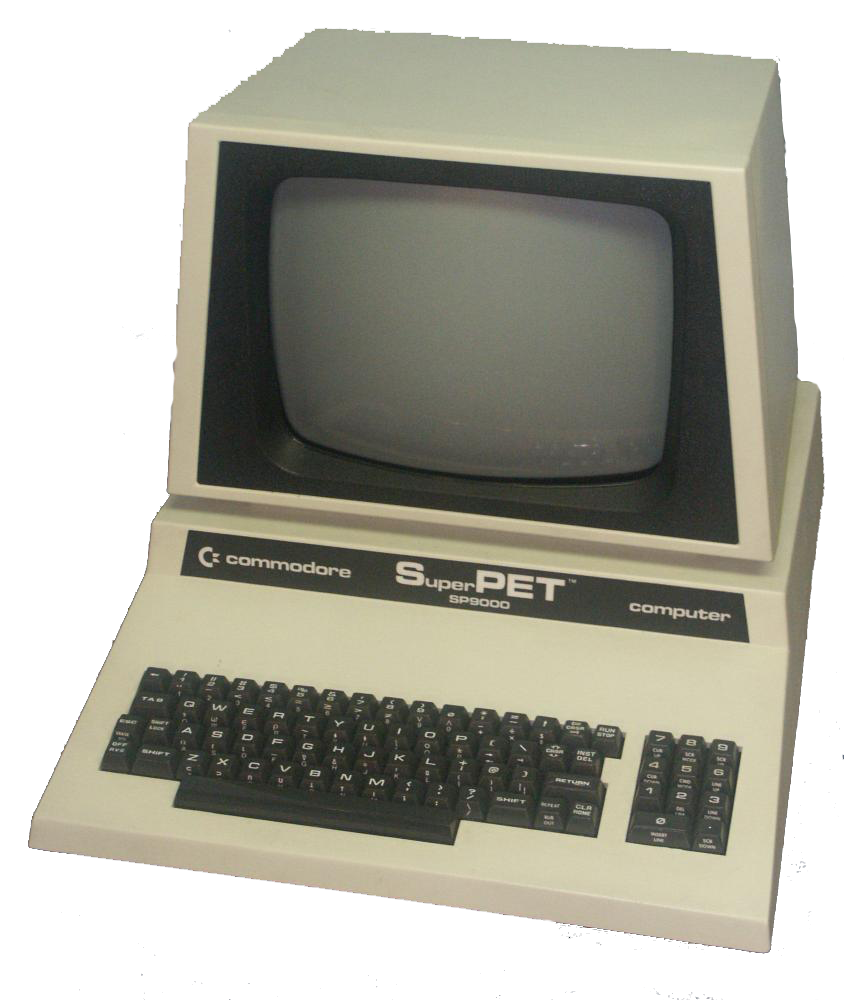Commodore PET
Basic Info

The Commodore PET (Personal Electronic Transactor) was a series of personal computers produced by Commodore International. They constructed the first all-in-one computer in 1977, the PET 2001. All the components of the computer were placed into a single metal case, it was provided of a CPU, a keyboard, a screen and a cassette tape recorder.The PET 2001 had 4 expansion ports: one to expand memory, one to add a second tape recorder interface, one for disks or printers and one to link with a modem.
The CPU was made-up of a MOS 6502 microprocessor and the computer was provided of a 4kB RAM expandable
to 64kB. It was equipped with a Commodore BASIC language (projected by Microsoft and sold to Commodore) and a
KERNEL installed on the ROM; the display was monochromatic (light blue) and textual-only with a resolution of 40x25.
 With this
computer was introduced the chiclet keyboard (the one that modern laptops uses) but at that time it wasn't very
reliable because it was a first attempt of innovation and was very difficult to type-on. It you wanted to expand
the RAM or some maintenance, it would be very simple, because the design of the PET 2001 allowed the users to open
the case like the hood of a car.
With this
computer was introduced the chiclet keyboard (the one that modern laptops uses) but at that time it wasn't very
reliable because it was a first attempt of innovation and was very difficult to type-on. It you wanted to expand
the RAM or some maintenance, it would be very simple, because the design of the PET 2001 allowed the users to open
the case like the hood of a car.

Following
In 1979 the PET 2001 was replaced by the PET-N (New), that was implemented with a new monitor (green-phosphor) and a new complete keyboard. The tape support was removed and KERNEL was upgraded.During these years the acronym PET was substituted by CBM(Commodore Business Machine) because a conflict with the PET developed by Softlab Munich. After the success of the PET 2001 and 2001-N, Commodore released a new series of computers: the PET 4000s in 1980 with an implemented 12'' display and a new version of the programming language: BASIC 4.0. It had an high success in didactic use with an high diffusion inside the schools.

Commodore developed also the 8000s with an enlarged screen and a softer design but was not so popular because of some incompatibilities with the software. The last computer of the series was the SuperPET designed in the University of Waterloo. It was created to help for teaching programming and was implemented with a second CPU: the Motorola 6809; it included BASIC for the 6502 micro processor and FORTRAN, PASCAL and some other languages for the 6809. The architecture of the PET series laid the basis for the following home computers like VIC 20 and the Commodore 64
External Links
- [Visited on 06/11/2014] Image "Museo dell' Informatica" Under fairy use.
- [Visited on 06/11/2014] Image "oldcomputers" Under fairy use.
- [Visited on 06/11/2014] Commodore PET